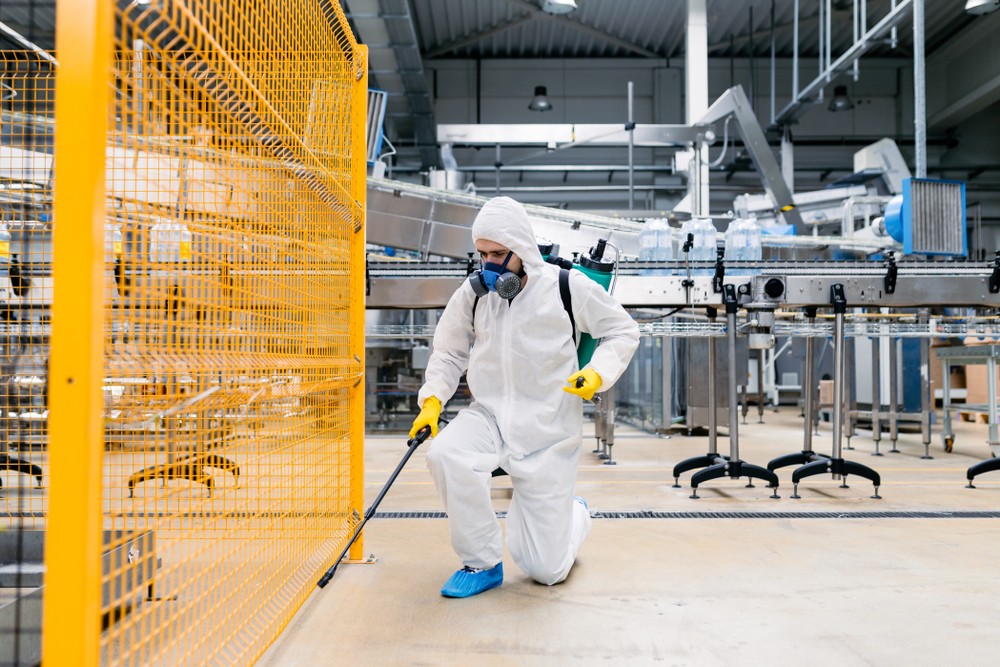Integrated Pest Control: Smart Pest Control for Factories
Pest Control
Industrial Pest Control: What is an Integrated Pest Management (IPM) System
Table of Contents
Introduction
Integrated Pest Management: What Is It?
Why IPM is Good for Industrial Pest Control
Examples of IPM Achievement in Factories
Pros and Cons of Integrated Pest Management (IPM)
Summary
This guide covers Integrated Pest Management (IPM). It is for controlling pests in the industry. The insightful use of IPM helps keep pests out of distribution centers and plants. It uses many methods to control bugs. It does this while keeping up with nature and public health. IPM techniques are generally utilized in modern pest services.
Industrial Pest Control: A Smart Approach
Large-scale pest issues can emerge in plants and warehouses. Rodents, mice, and different pests can be tricky. They might cause risk and dirt. We in this manner require effective integrated pest management.
Integrated Pest Management: What Is It?
One astute strategy for managing pests is integrated pest management or IPM. Using sprays is not the only thing to do. IPM looks at the whole picture. It tries to stop pests before they become a problem.
How Integrated Pest Management Works
We handle pests comprehensively and proactively. First, we study pests, learning about their preferences and habits. To identify problems early, we continuously scan for indications of pest activity. At Progressive Pest, we eliminate insect attraction points. This stops infestations before they start. We use various pest management techniques, not just chemicals. This ensures effective, long-lasting pest control.
Ways to Control Pests in IPM
At Progressive Pest, our method of pest treatment is all-encompassing. We keep our surroundings dry and clean. Pests love moist, dirty places. To keep pests out, we also utilize barriers and traps. We also use nature's help. We introduce helpful insects as prey for dangerous pests. We carefully use safe sprays to ensure safety and limit harm to the environment.
Setting Up IPM in Factories
First, Progressive Pest inspects the entire facility for insect entry points. This is the first step in efficiently implementing Integrated Pest Management (IPM). We then create a thorough plan to stop and manage insect infestations. We train all employees in pest control methods. This enables them to help keep the environment pest-free. We keep a close eye out for any new pest problems at the plant and keep working hard to control them. We quickly adjust our tactics if any part of the plan fails. This ensures the best possible outcomes.
Why IPM is Good for Industrial Pest Control
At Progressive Pest, we support IPM (Integrated Pest Management) to fight industrial pests. IPM is more eco-friendly. It uses fewer chemicals, so it harms the environment less. Early pest control is cheaper than treating severe infestations. So, it saves money. Because IPM limits a worker's exposure to strong chemicals, it also makes them safer. It helps businesses comply with pest control laws, both local and global. Finally, a clean, pest-free space boosts your business's look and pleases clients.
Examples of IPM Achievement in Factories
IPM has been effectively utilized to control pests in several workplaces. IPM, for instance, could be used in a food processing facility to keep pests away from food items. They can prevent pests by keeping a clean environment and using traps. This will stop them before they become a big problem.
Tools & Technology for IPM
IPM controls pests with a variety of devices and technology. It includes insect-attracting and trapping lights, pest-monitoring software, and pest sensors. These devices aid factories in keeping pests at bay.
Educating Employees on IPM
In IPM, worker training is crucial so we, Progressive Pest focus mainly on the training of our employees. Employees must be aware of the warning signs of pests and how to prevent them. Frequent training may keep employees ready to help with pest management.
How to Select an IPM Service
Hiring a good IPM provider can help if you want to use IPM in your production. Seek an industrial pest control provider with a solid track record and experience. Ask about their strategies to prevent pests from entering your factory.
Modern Pest Services and IPM
Many modern pest services use IPM. They know it works well for industrial pest control. These services have trained people who know how to use IPM in big buildings.
Pros and Cons of Integrated Pest Management
Pros | Cons |
Environmentally friendly | Requires more time and effort |
Long-term prevention | |
Cost-effective in the long-term |
Conclusion
IPM is a great way to do industrial pest control. It stops pests without hurting the environment. It saves money and keeps workers safe. To protect your industries and warehouses from pests, consider Integrated Pest Management.
FAQs:
1. Q: How does IPM help the environment?
A: IPM uses fewer chemicals and tries to prevent pests naturally. This is better for the environment than using lots of strong pesticides.
2. Can IPM reduce the cost of pest control?
A: Since IPM concentrates on preventing pest issues, it is possible to save money using it. Compared to later treatment of major pest problems, this may be less expensive.

